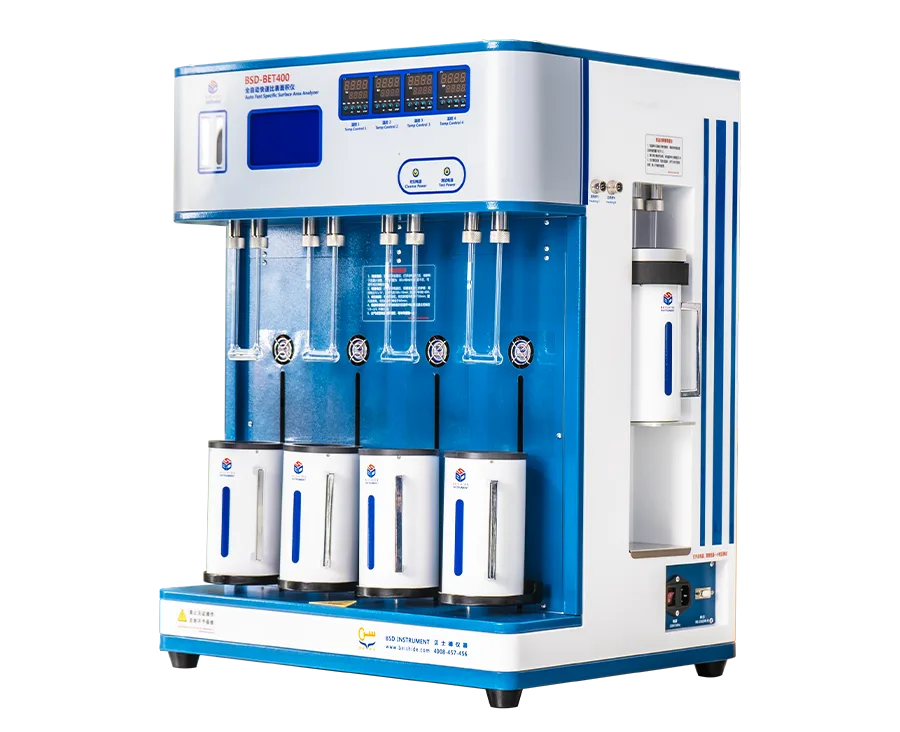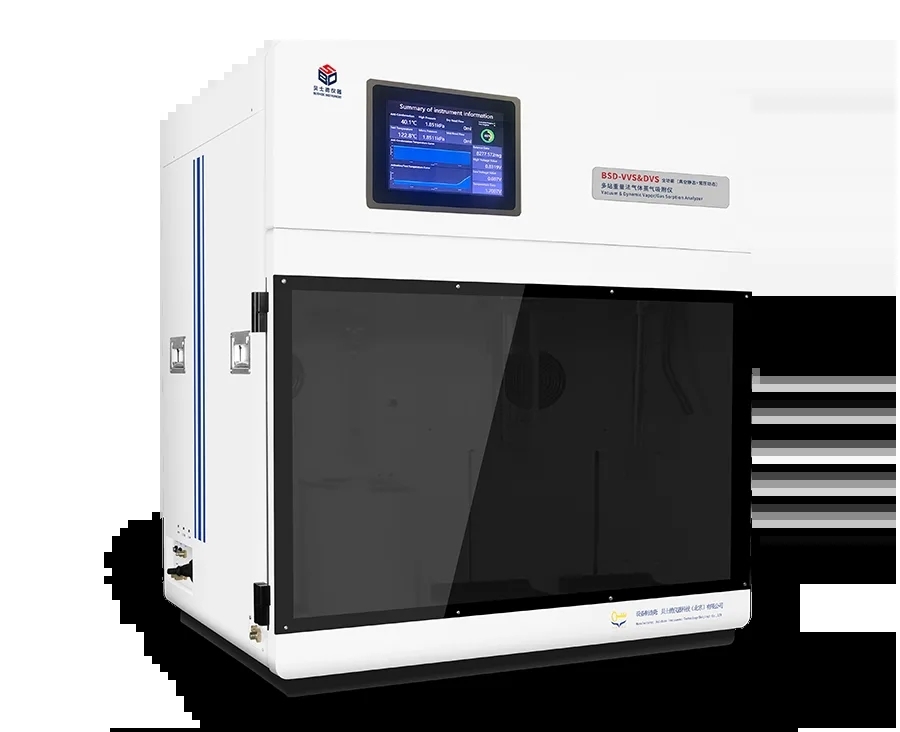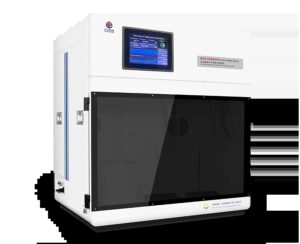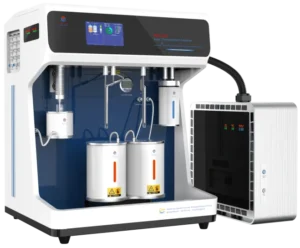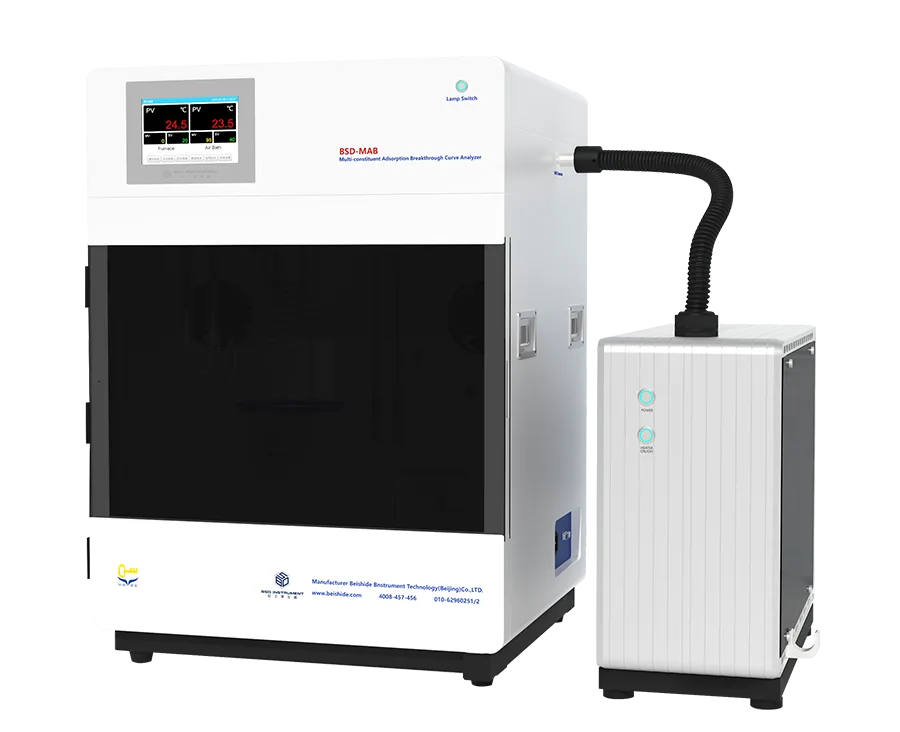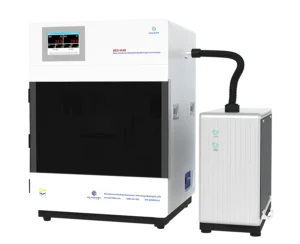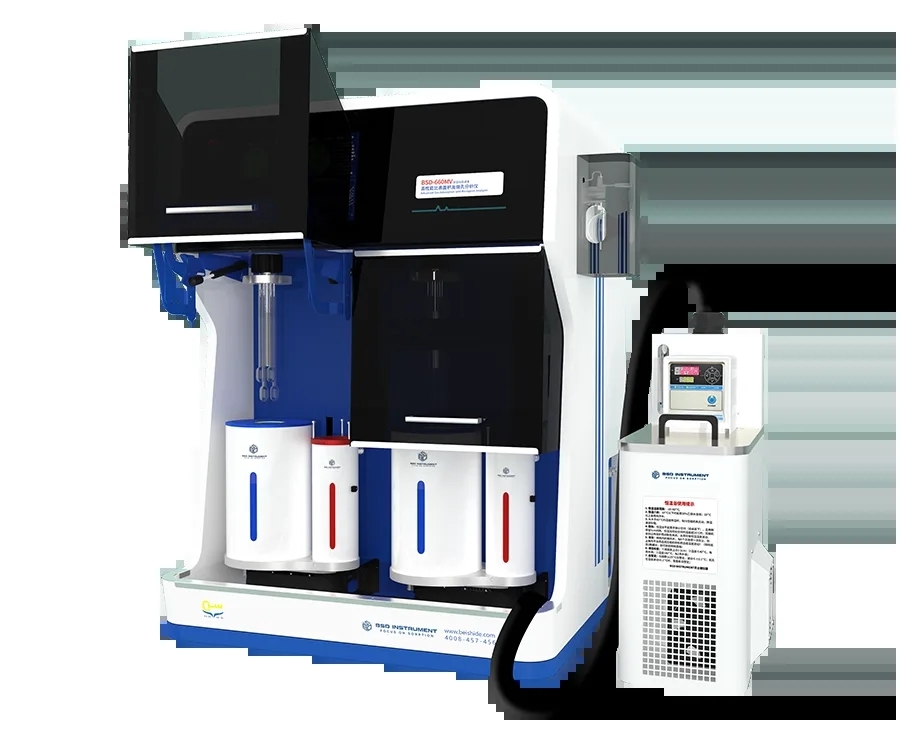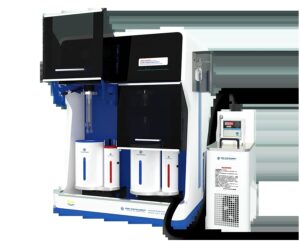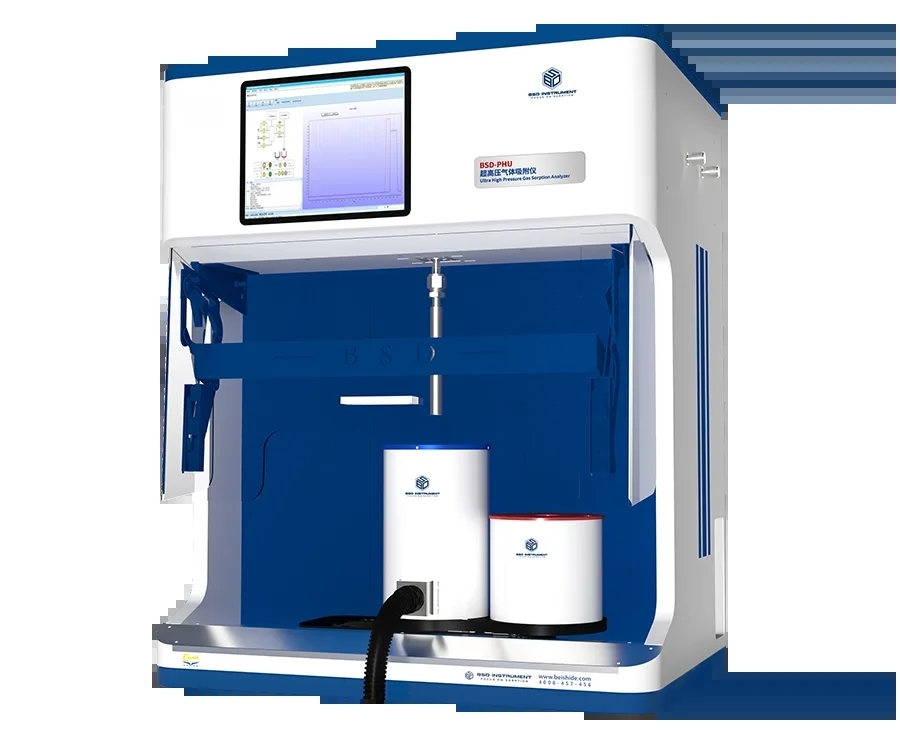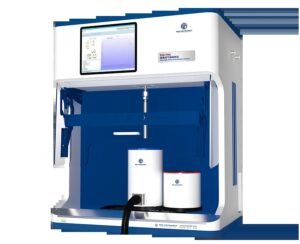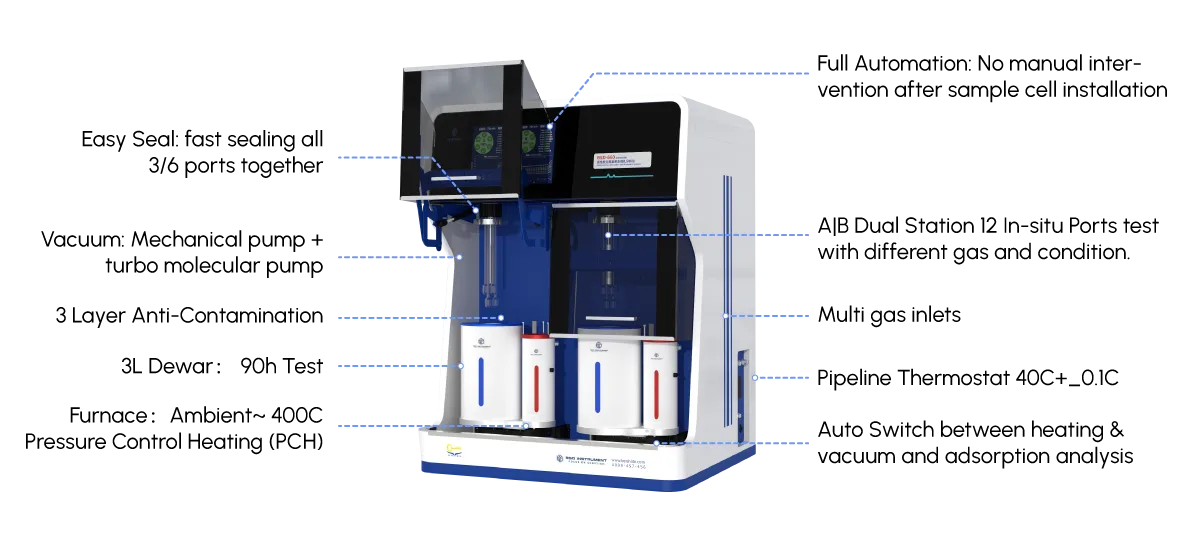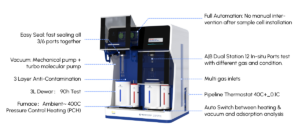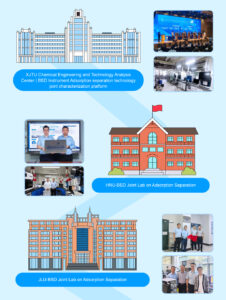China BET Surface Area Analyzer Wholesale: Leading the Way with BSD Instrument
Introduction
In the realm of material science and industrial applications, the accurate analysis of surface area and porosity is paramount. These parameters are critical in understanding the physical characteristics of materials, which in turn influence their performance in various applications. China has emerged as a global leader in manufacturing high-quality surface area analyzer, with BSD Instrument Co., Ltd. at the forefront of this industry. This article delves into the wholesale offerings of BET surface area analyzer from China, focusing on the exceptional products and services provided by BSD Instrument.
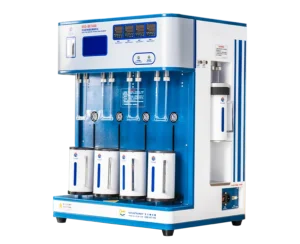
About BSD Instrument Co., Ltd.
BSD Instrument Co., Ltd. has been dedicated to the design and manufacturing of sorption analyzers for 18 years. Their mission is to drive scientific and industrial advancements with precise material analysis tools. By providing world-class sorption and surface characterization solutions, BSD Instrument enables breakthroughs in material science and industrial applications. The company is committed to continual innovation, designing and delivering instruments that offer unmatched precision and reliability.
Mission and Vision
BSD Instrument’s mission is to equip clients with state-of-the-art technology to tackle complex challenges in research, development, and production. This commitment contributes to scientific discovery and industrial advancement. The company’s vision is to be a global leader in the sorption and surface analysis industry, known for its innovation, quality, and reliability.
Core Values
- Innovation: Continuous investment in research and development to stay at the forefront of technology.
- Quality: Unwavering dedication to precision, reliability, and continuous improvement.
- Customer Focus: Tailored solutions to meet the specific needs of industries seeking innovative and reliable material analysis tools.
Product Portfolio
BSD Instrument offers a comprehensive range of high-tech instruments designed for various adsorption and surface analysis needs. Their core product offerings include:
Gravimetric Sorption
For precise vapor and gas adsorption measurements.
Surface Area & Porosity Analysis
Instruments designed for accurate characterization of surface properties in materials.
High-Pressure Gas Sorption
Ideal for measuring gas uptake under extreme conditions.
Corrosive Gas Adsorption
Solutions for studying materials in the presence of reactive gases.
Chemisorption & Breakthrough Curve Analysis
For evaluating catalytic properties and adsorption efficiencies.
BSD-BET400 AUTO FAST SPECIFIC SURFACE AREA ANALYZER
One of the flagship products in BSD Instrument’s Surface Area & Porosity line is the BSD-BET400 AUTO FAST SPECIFIC SURFACE AREA ANALYZER. This highly efficient, fully automated instrument is designed for testing samples with medium to small specific surface areas using the Dynamic Chromatography Method.
Key Features
- High Efficiency: Capable of testing 12 samples per hour with the BSD-AD8 eight-station pre-processor.
- No Standard Sample Required: Eliminates the influence of standard samples, reducing testing costs.
- High Resolution: Suitable for rapid analysis of materials like battery materials, metal powders, and organic powders with small to medium surface areas.
- High Stability: Dynamic chromatography offers unique high stability, ideal for industrial quality control.
- Sample Type: Accommodates powder, granules, fibers, and flake materials.
- U-Shaped Sample Tube: Ensures test accuracy while making sample tube loading convenient.
- Cold Trap: Purifies the gas from the cylinder, enhancing precision.
- Open Data Interface: Software can integrate with LIMS for easy upload of test results.
Technical Specifications
- Analysis Station: 4
- Test Method: BET Dynamic Chromatography
- Surface Area: >0.0005m²/g
- Precision: <±1%
- Activation: Purging, Heating, Ambient to 400°C, with 4 external furnaces
- Sample Type: Powder, granules, fibers, and flake materials
- U-Shaped Sample Tube: Patent design to control gas flow and load samples conveniently
- Cold Trap: To purify feed gas and increase precision
- 5-Inch LCD: Real-time learning status of the analyzer
Advanced Features
- Wind-Heat Assisted Desorption: Provides precise control of airflow and temperature, accelerating the sample’s temperature recovery from cryogenic conditions. This ensures rapid, sharp desorption peaks with minimal background interference, improving signal accuracy and analytical precision.
- Gas Purification Cold Trap: Significantly improves the purity of gases in the system, enhancing gas quality by over one order of magnitude. This ensures more accurate and reliable analytical results by effectively removing unwanted substances.
- Free of Reference Sample: Incorporates a thermostatically controlled quantitative tube, serving as an internal reference for sample adsorption. This eliminates the need for external reference samples during testing, enhancing efficiency and reducing costs.
Services and Global Impact
BSD Instrument is committed to providing innovative material analysis instruments to research and industry worldwide. The company’s focus on automation at all levels of lab analyzers saves researchers precious time from doing repeated lab tasks, reducing manual handling and minimizing errors that affect results.
Industry Solutions
- Pharmaceutical Power Characterization: Instruments designed according to pharmacopoeia recommendations.
- Non-Conventional Oil & Gas Recovery: Adsorption characterization solutions to simulate underground high-pressure conditions.
- Gas Separation Membrane: Characterization primarily involves measuring the permeability and selectivity of membranes.
- Fuel Cell Adsorption Characterization: Solutions to characterize the adsorption properties of catalyst materials and proton exchange membranes.
Quality Assurance
BSD Instrument’s commitment to innovation and quality is unwavering. The company’s instruments are built with the highest standards of craftsmanship and undergo rigorous testing to ensure reliability and accuracy. BSD Instrument is ISO-certified, and its manufacturing processes comply with international standards, ensuring that products consistently meet and exceed customer expectations.
Wholesale Opportunities
For businesses looking to purchase BET surface area analyzers in bulk, BSD Instrument offers competitive wholesale pricing. The company’s dedication to quality, innovation, and customer satisfaction makes it an ideal partner for global distributors and retailers.
Benefits of Wholesale Purchasing
- Competitive Pricing: Enjoy reduced costs when purchasing in bulk.
- Reliable Supply: Consistent and reliable supply chain ensuring timely delivery.
- Quality Assurance: High-quality instruments that meet international standards.
- Customized Solutions: Tailored solutions to meet specific business needs.
Conclusion
BSD Instrument Co., Ltd. stands out as a leading manufacturer of BET surface area analyzers in China, offering a wide range of high-quality, innovative products tailored to meet the needs of various industries. With a strong commitment to quality, innovation, and customer satisfaction, BSD Instrument is well-positioned to meet the growing demand for advanced material analysis tools globally. For businesses looking to invest in reliable and precise surface area analyzers, BSD Instrument’s wholesale offerings present an excellent opportunity to access top-tier technology at competitive prices.
For more information or to request a quote, please contact BSD Instrument at:
- Address: No 6 Xinlitun North Road, Shahe Town, Changping District, Beijing, 102206, China
- Phone: +65 84967547
- Skype: 8615612138677
- Email: info@bsdsorption.com
- WhatsApp: +65 84967547
Choose BSD Instrument for your BET surface area analyzer needs and experience the difference in quality, innovation, and service.
